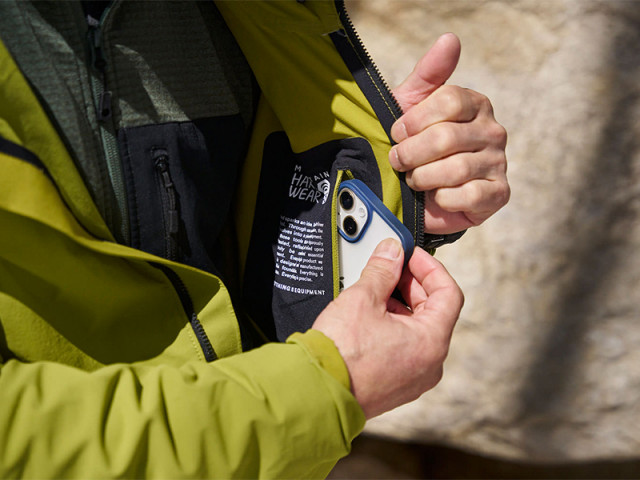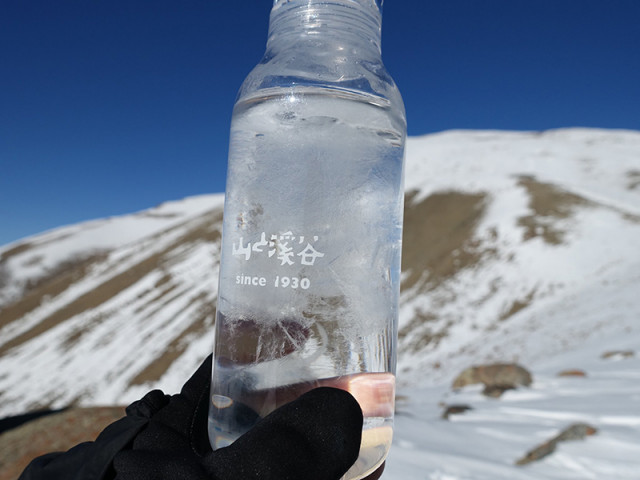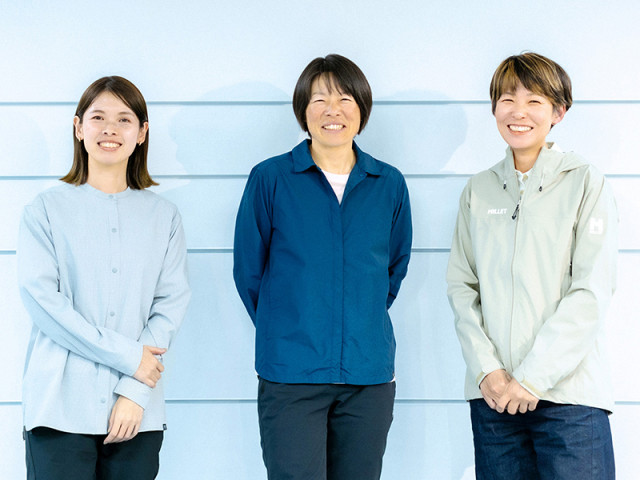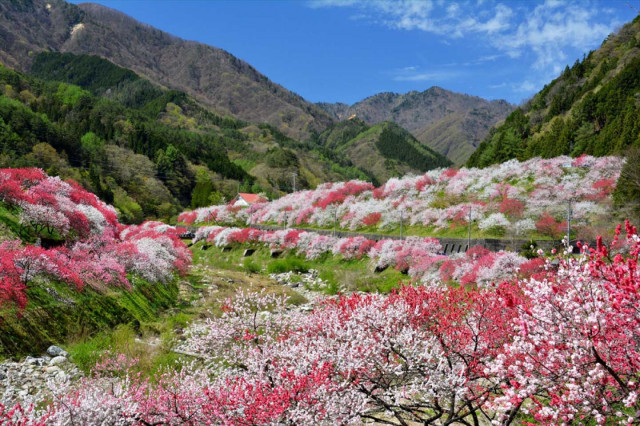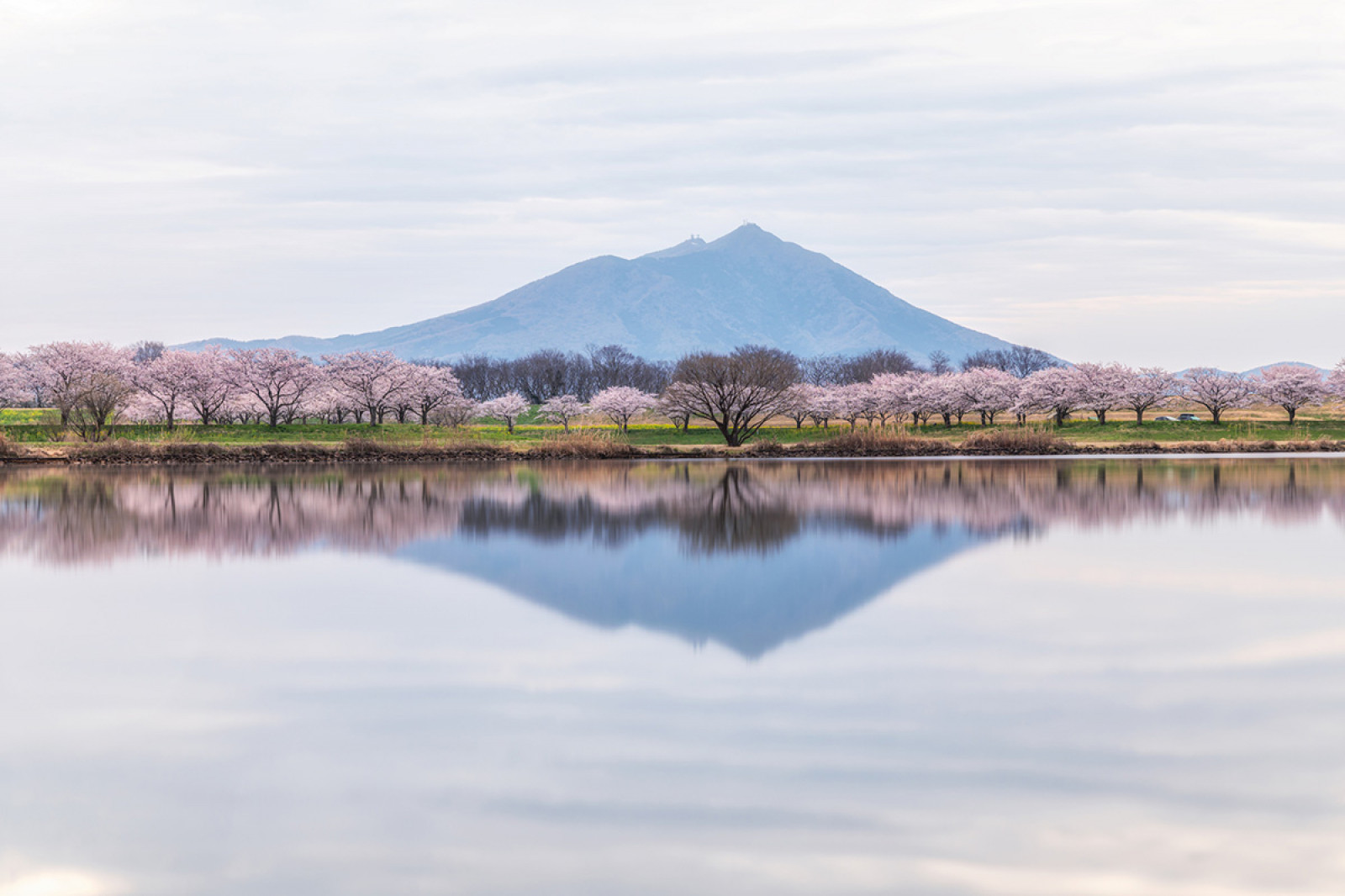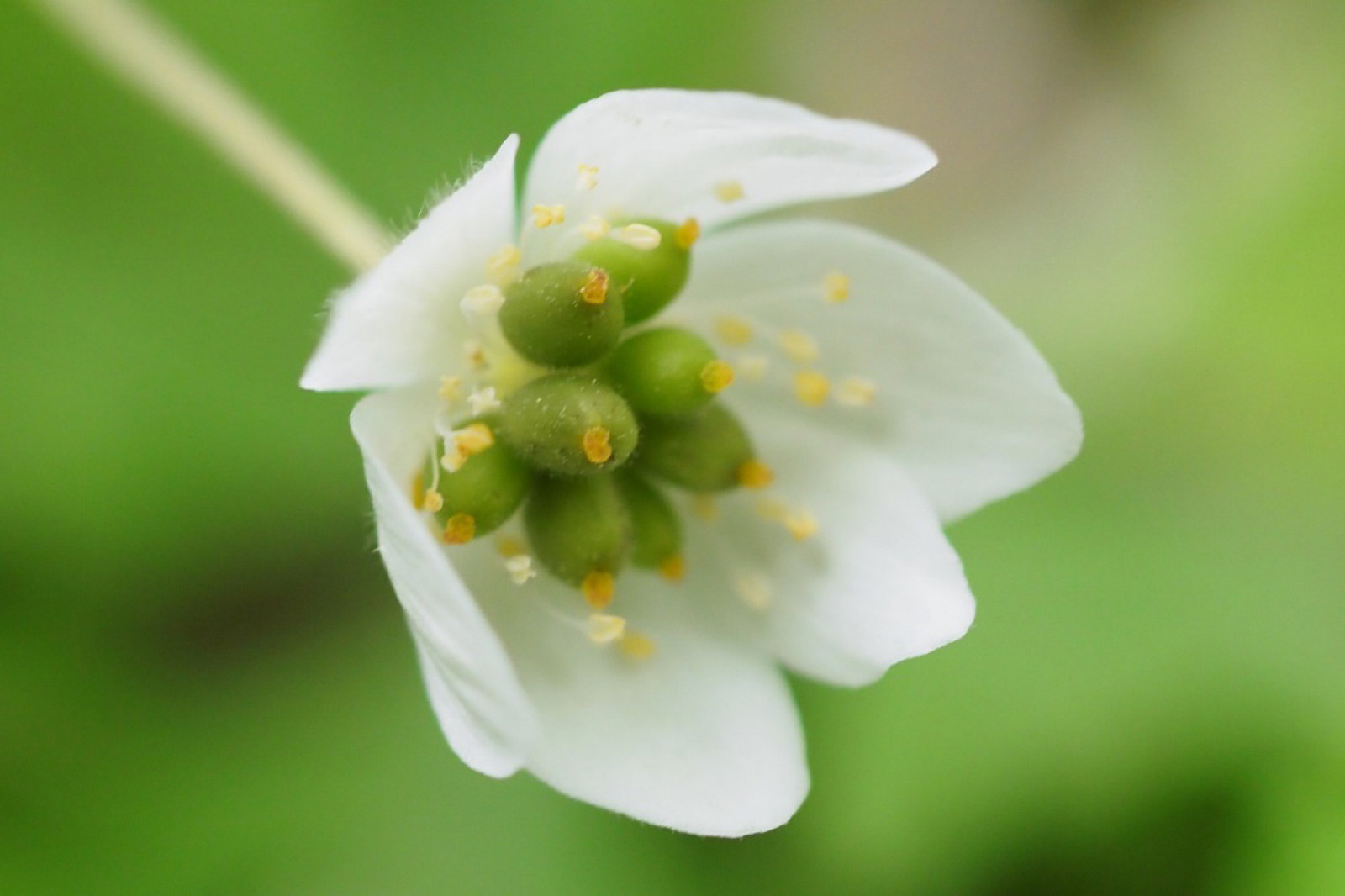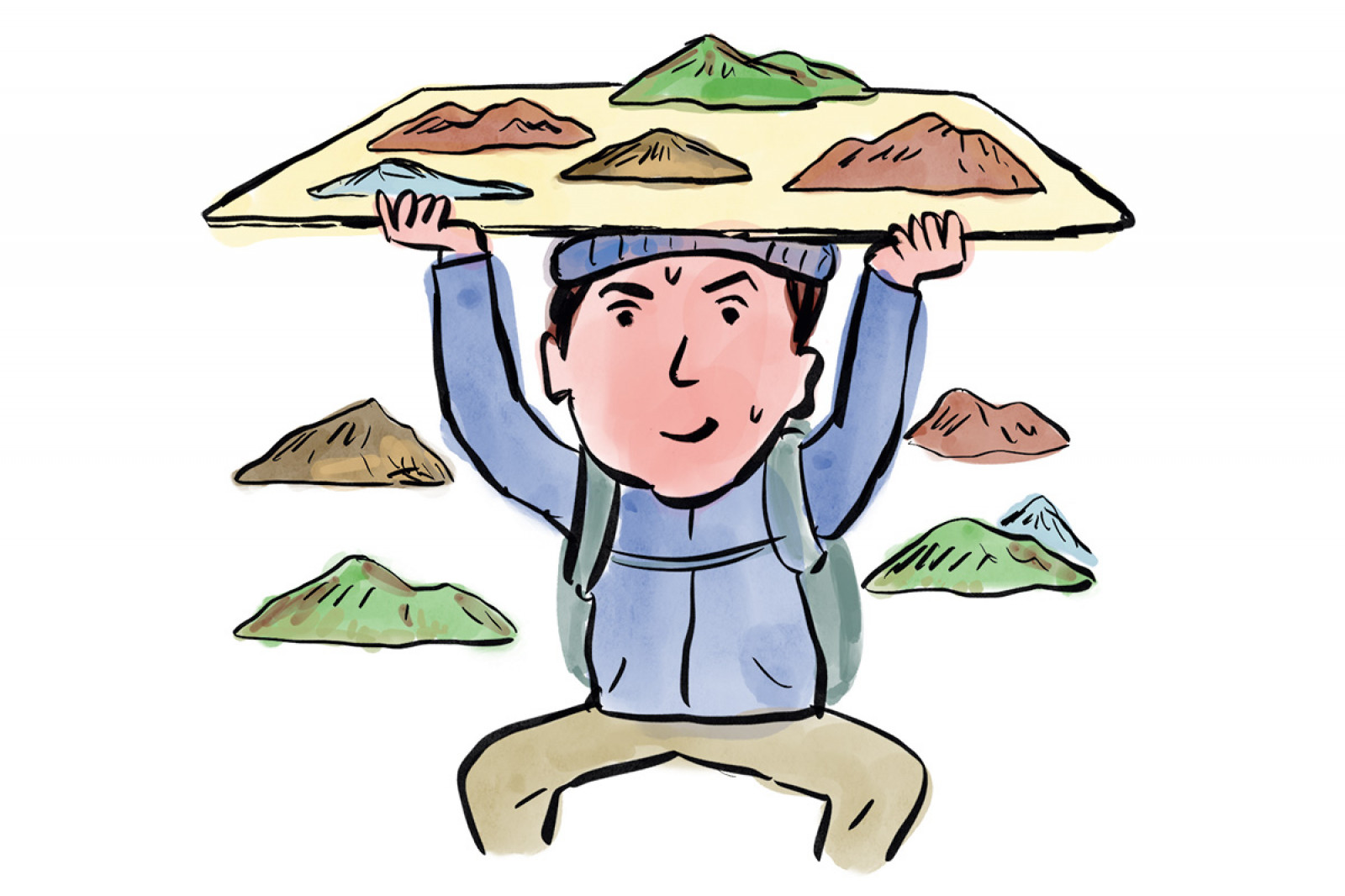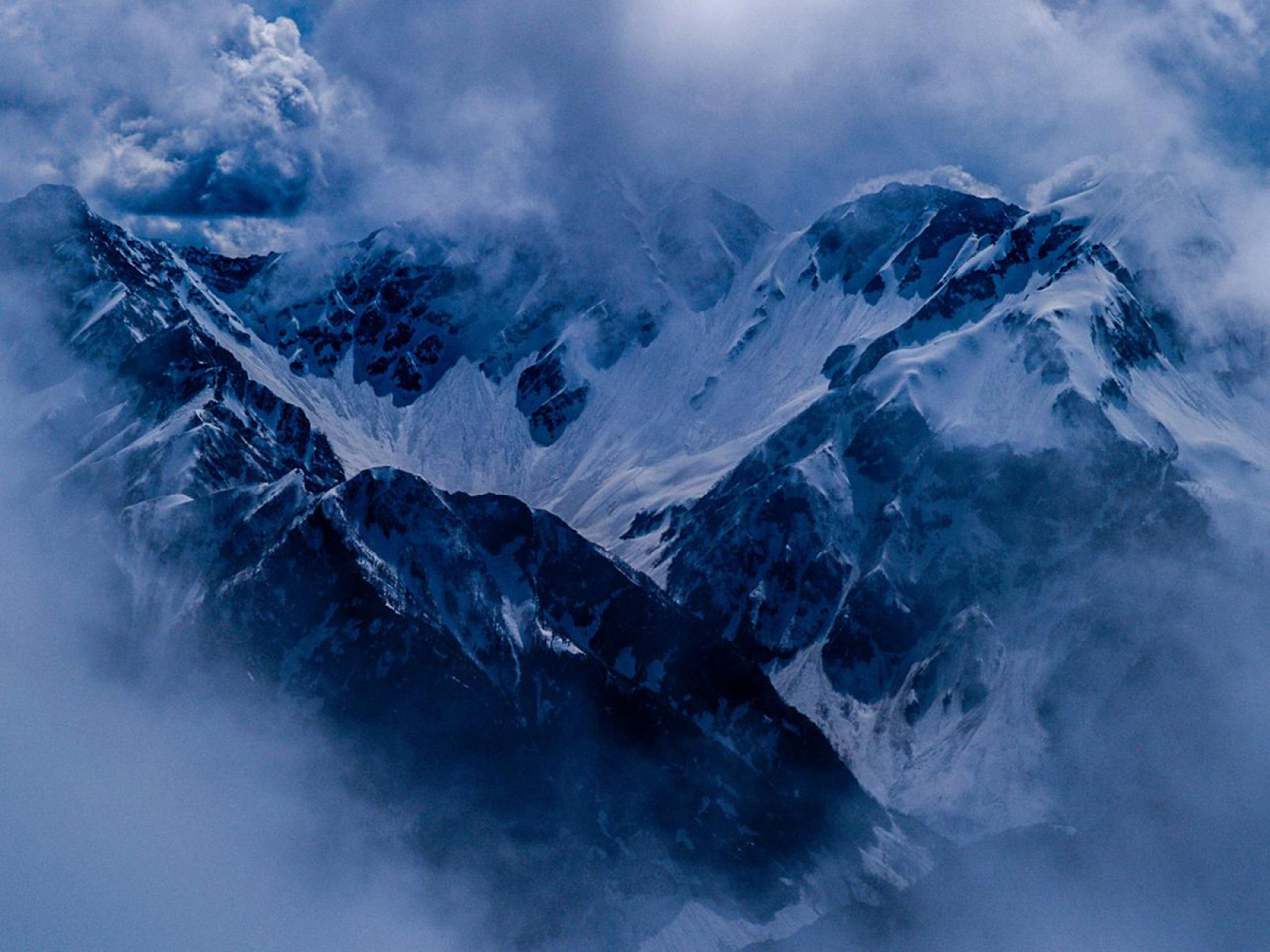二千四百年以上の歴史を伝える、新潟県・弥彦山の信仰と伝説
越後平野に浮かぶようにそびえる、三角錐の端正な山容の山、弥彦山。その麓に里宮を、頂に御神廟を持つ彌彦神社は、3つしかない鎮魂祭を行う神社として知られる。その理由は、二千四百年以上も前――、弥彦山に祀られている天香山命の神武天皇の「神武東征」での活躍から来るものだという。
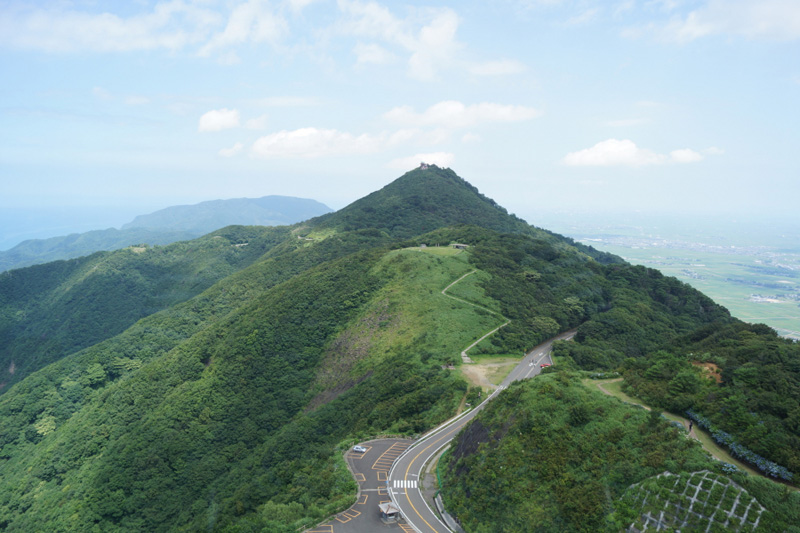
広大な越後平野の中央に固まるように聳え立つ弥彦山脈の主峰である弥彦山は、北に位置する多宝山との双耳峰である。北に角田山、南には国上山へと連なる634mの低山ではあるものの「日本百名山」の著者・深田久弥も、その後書きにて「名山には違いないが絶対的な標高が足りなかった」とあえて述べているほど、秀麗な山容をしている信仰の山である。
その信仰の源流を辿ってみると、御山への信仰はそのまま麓の弥彦神社が担っており、麓の里宮に対して山頂には奥宮的存在の御神廟が奉祀されている。
中心となるご祭神は伊夜日子大神(いやひこのおおかみ)とされ、別名に天香山命(あまのかごやまのみこと)の名を持つ。この天香山命はさらに別名を持っていて高倉下命(たかくらじのみこと)とも呼ばれ、日本創生の神話・初代天皇陛下である神武天皇の「神武東征」にて活躍した神様と伝わっている。
そのくだりを説明すると――、神武天皇がまだカミヤマトイワレヒコと呼ばれていた時代に(天皇として即位する以前)、日向の国から東に向けて出兵し、各地をおさめる勢力と時には合流し、時には戦い大和(奈良)の地を目指していた。
長い年月をかけて東に進んできた神武天皇だが、大和を目前に最大最強の反乱軍と出会うことになった。その勢力を率いていたのがナガスネヒコと呼ばれる国津神(現地土着の勢力)で、天津神(天孫降臨してきた神々の系譜)として大和入りしようとする神武に対し、「我々にもニギハヤヒという天津神が存在する。天津神はそんなにたくさんいるものではないだろう。ゆえにあなたを信じるわけにはいかない」と、神武の大和入りを阻止しようと戦いに臨んだという。
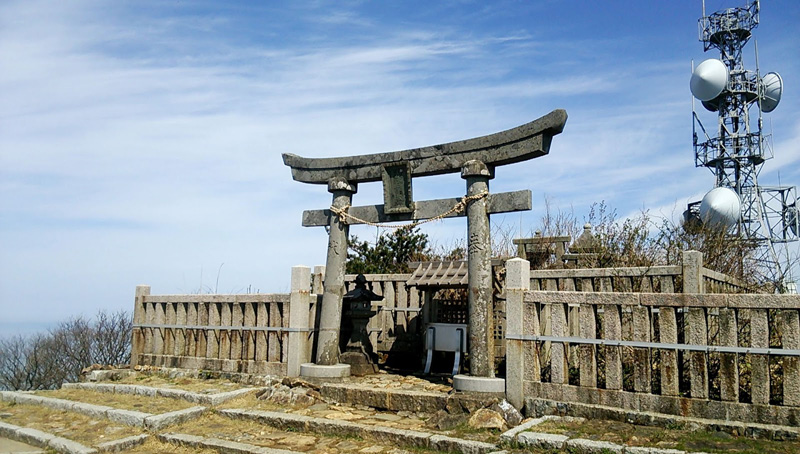
ここで登場する「ニギハヤヒ」とは、日向に降臨した神武の祖先であるニニギノミコトに先だって、大和の地に降臨したと伝わるニニギの兄とされる神である。ニギハヤヒを奉ずるナガスネヒコ軍団の強力な抵抗にあい、神武勢力は瀕死の状態となってしまう。
当時、神武は今でいう大阪方面からの大和入りを断念し、「そもそもが太陽神天照大神の子孫である自分たちが日が昇る東に向かっていくことが間違っている」と、紀伊半島をぐるりと大回りして和歌山県の熊野川あたりから大和を目指す行軍を選択した。
その道中で、さまざまな問題や危険に遭いながら戦いを繰り広げていく中で、神武は山の神々の毒気にさらされて身動きが取れなくなってしまう。そこに、もの凄いタイミングで宝と力を携えて救いの手を差し伸べた者こそが、高倉下という存在である。高倉下は弱り切っている神武に対し、建御雷神(タケミカヅチ・出雲国譲りの際に活躍する武神)経由で十拳剣を送り届け、ピンチを救ったと伝わっている。
その後、復活を果たした神武は再度ナガスネヒコと対峙することとなるが、ここで天津神であるニギハヤヒがナガスネヒコの首を神武に差出し、戦いは終焉を迎える。そして、晴れて神武による「ハツクニシラス(初めて国をおさめる)」東征が完結している。
この日本創生の重要な神話に登場する高倉下こそ、天香山命その神である。天香山命は神武天皇救出の功労から布都御魂剣を賜ったといい、その後は兵を率いて尾張から信濃、そして越を平定したと伝わっている。最終的には越後国開拓の詔を受け、越後国の野積の浜(現在の長岡市)に上陸し、地元民に漁労や製塩、稲作、養蚕などの産業を教えたとも伝えられる。
そんな偉業を成し遂げた天香山命(=高倉下)は、弥彦山に祀られ「伊夜比古神」と呼ばれて崇敬を受けた。それが、現在の弥彦神社という訳だ。
そして同社は、宮中でも行われる鎮魂祭(新嘗祭の前日に天皇の鎮魂を行う儀式)を行う神社のひとつとしても有名である(この鎮魂祭が継承されているのは、ほかにも石上神宮、物部神社がある)。何故、弥彦神社で鎮魂祭が行われているのか。それはこの鎮魂祭はニギハヤヒが遺した10種の天璽瑞宝(あまつしるしのみづたから)を神武天皇に献上し、それを使い天皇と皇后の魂を鎮める呪術を実施したことに始まるとされているからで、弥彦神社に祀られる天香山命(=高倉下=伊夜比古神)が如何に日本の神々にとって重要なポジショニングなのかがわかる。
日本創生の神話に登場し、神々に伝わる剣を中心に語られる天香山命(=高倉下=伊夜比古神)は、その存在自体が呪術的でもあり武功的でもあり、国土創生にかかわる重要な神と言える。その偉大なる神を奉ずる弥彦山も、今ではロープウェイで山頂まで数分で到着できてしまうが、もちろん自らの足で一歩一歩神に近づく登拝路も残っている。
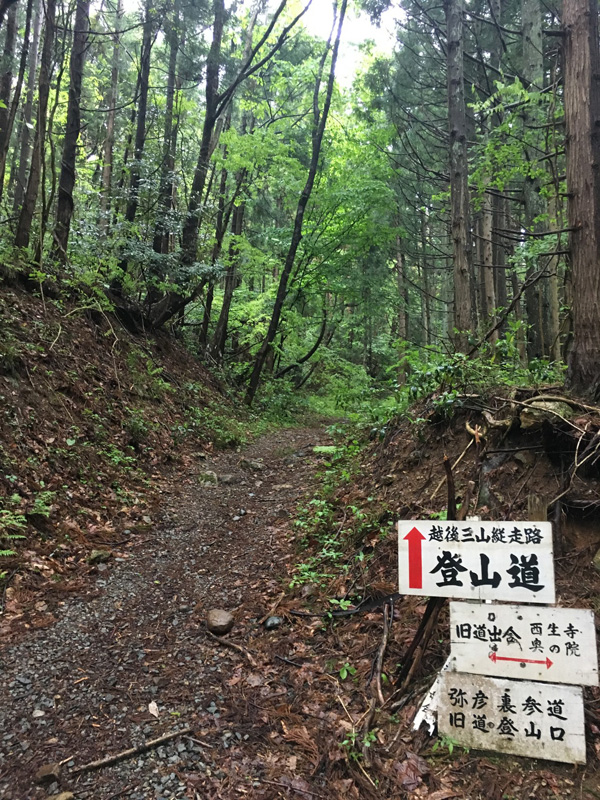
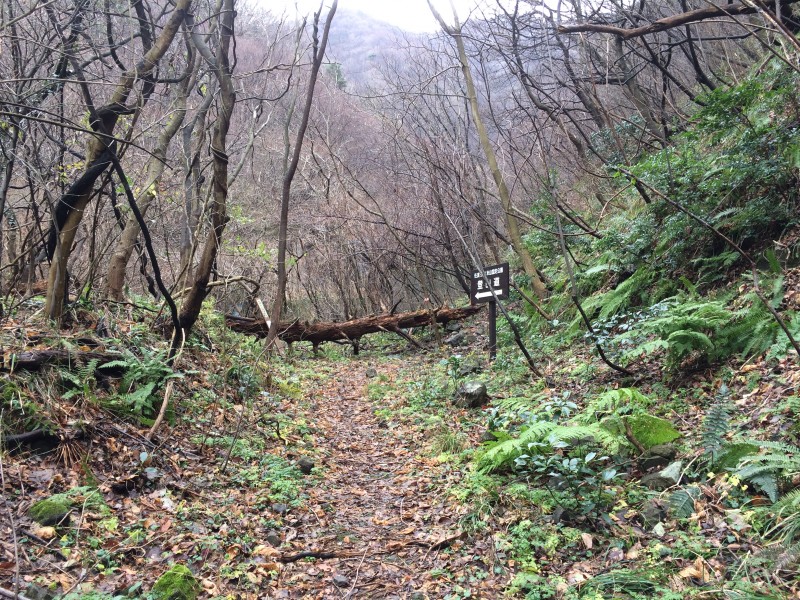
休日ともなると山頂付近のロープウェイ駅周辺は多くの方が山に抱かれにやってくる。この土地に住まう人々の心の故郷になっていることは間違いないだろう。天気が良い日などは天香山命(=高倉下=伊夜比古神)の御神廟の周辺にも、たくさんの人が集まり、弥彦の山を楽しんでいる。その姿に、天香山命(=高倉下=伊夜比古神)がつくられた越後の國の国づくりの姿そのものを見ることが出来る。
Folklore and faith on Mt. Yahiko (弥彦山 in Niigata) leads us through 2,400 years of local history and beyond
Mt. Yahiko(弥彦山)stands solidly in the middle of the vast Echigo Plain. It’s the main mountain of the Yahiko mountain range in Hokuriku, on the northern side of the main island of the Japan archipelago. This mountain and Mt. Tahou, located further north, come as a pair, a twin-peak, and are themselves sandwiched by two other mountains: Mt. Kakuda (角田山) to the north and Mt. Kugami(国上山)to the South.
The author of the widely-appreciated book “The Best Hundred Mountains in Japan”, Kyuya Fukuda, mentions Mt. Yahiko in its afterword: “Mt. Yahiko is definitely a significant mountain, worthy of mention, but unfortunately it lacks the necessary height to be included in this selection.” It says a lot that this low mountain (it’s only 634m) is of such unique beauty that it warrants special honors. And it’s a mountain that’s long been worshipped as special by the locals.
Evidence of this ancient worship is the Yahiko Shrine, which sits at the foot of the divine mountain. That’s the Satomiya shrine, located close to people’s habitat for people to frequently pay a visit. At the peak of the mountain is the Okumiya shrine, the innermost shrine, where the deities are really enshrined.
The central deity enshrined there is Iya-Hiko-no-Ookami (伊夜日子大神), otherwise known as Amano-Kaguyama-no-Mikoto (天香山命). This deity even has a third name, Taka-Kuraji-no-Mikoto (高倉下命). It’s under this name that he is mentioned in the myth of the Eastern expedition made by the very first Emperor, Jinmu, as a deity who played a very important role in the genesis of Japan.
The story goes back to before Emperor Jinmu’s accession. At that time he was called Kamuyamato-Iwarehiko. He left Hyuga Province (south-west Japan) towards Yamato (today known as Nara in central Japan) with his troops. On his way, he was sometimes joined by regional local rulers, and hence gained extra troops, and other times he needed to battle with opposing powers. His ultimate goal was to unite the whole nation as one country. The journey took many long years. Just before they reached Yamato, his troops were stopped by the largest and the most fierce rebel group. The rebels were led by the local guardian deity, Nagasunehiko, and the deity challenged Emperor Jinmu, blocking his way to Yamato.
“You claim to be the direct descendant of the original deities who descended to Earth from the celestial lands, and use that story to justify your uniting the nation,” said Nagasunehiko. “But I say the real descendant of theirs is our deity, Nigihayahi. There can’t be so many different direct descendants of the original deities.”
The deity Nigihayahi was said to be the elder brother of Ninigino-Mikoto, the ancestor of Emperor Jinmu, and was said to have descended to the land of Yamato before his younger brother Ninigino-Mikoto descended to the Hyuga province.
So this mighty rebel army led by Nagasunehiko battled fiercely against Emperor Jinmu’s forces. As a result, Jinmu’s troops almost got defeated and were barred from advancing. Remembering that he was the descendant of the original creator of all the deities, the Sun Goddess Amaterasu-Omikami, Jinmu argued the reason for their defeat was that he was going against the nature of the Sun by traveling from west to east. He chose to abandon his strategy of reaching Yamato from the west side, and went all the way around the Kii Peninsula so that he would approach Yamato from the south-east, from the region of the river Kumano in present-day Wakayama prefecture.
That journey through the deep, mountainous land protected by many mountain deities was fraught with hardship and violence. Before they reached Yamato, Jinmu succumbed to the poisonous power of these local deities. All seemed lost.
At the last moment, the deity Taka-Kuraji-no-Mikoto brought to Jinmu, with the help of Takemikazuchi (建御雷神: the deity of war who played an important role in the Izumo Kuniyuzuri myth), treasures and powers that were his salvation. He granted the mortally-weakened Jinmu a mighty weapon, the Ten Hands Long Sword (十拳剣:Totsuka no Tsurugi). With it, the recovered Jinmu faced Nagasunehiko once more. But it was the Nigihayahi, the deity that Jinmu’s opponents worshipped, who handed Jimnu the head of Nagasunehiko. This concluded Emperor Jinmu’s expedition to unite the nation, and he was thereafter known as Hatsukuni-shirasu (“he who first ruled the nation”).
It is Taka-Kuraji-no-Mikoto, who played the crucial role in this genesis myth of the nation, who is enshrined at Mt. Yahiko (where he is referred to as Amano-Kaguyama-no-Mikoto). The story continues that this Amano-Kaguyama-no-Mikoto was gifted a special sword, Futsumitama-no-Tsurugi (布都御魂剣), for saving Emperor Jinmu, and came to subjugate three provinces: Owari (尾張), Shinano (信濃) and Koshi(越). Ultimately, it is said that he got an Imperial edict to develop Echigo (越後) and after landing at its Nosaki beach (野積の浜: current Nagaoka city), he educated the locals in the industrial wisdoms of fish catching, salt production, rice cultivation and sericulture, etc..
Known as the deity of such many and significant accomplishments, Amano-Kaguyama-no-Mikoto (a.k.a. Taka-Kuraji-no-Mikoto) was eventually enshrined at the top of Mt. Yahiko by the locals with the name, Iya-Hiko-no-Ohkami (伊夜比古神). That same shrine, Yahiko Shrine, survives to the present day.
Yahiko Shrine is famous for being one of the shrines where the “repose of souls” festival (鎮魂祭:Chinkon-sai Festival) is held. Other shrines include Isonokami-Jingu Shrine (石上神宮) in Nara and Mononobe Shrine (物部神社) in Shimane. It’s a ritual event also conducted in the present-day imperial court to bring peace to the past Emperors of Japan ahead of Niiname-sai (新嘗祭), the harvest festival at which the Emperor makes tributes to the gods. Yahiko Shrine has the honor of hosting the repose-of -souls ritual because the sacred ten treasures given to Jinmu before the final battle, Amatsu-Shirushi-no-Mizutakara (天璽瑞宝), is said to be the offerings used in the very first ritual to repose the souls of past Emperors and Empresses with magic spells. All of this highlights how important the deity Amano-Kaguyama-no-Mikoto (a.k.a. Taka-Kuraji-no-Mikoto, a.k.a. Ilya-Hiko-no-Ohmikami) is in the world of Japanese deities.
This significant deity, who appears in Japan’s genesis myth and who is referred to in the story of the sacred sword, is very mysterious and at the same time somewhat violent. Mt. Yahiko, which enshrines this prominent deity, is nowadays equipped with a cable car line that will take you to the top in just a few minutes. You can of course use your feet to get to the peak where the deity resides. The cable car gets busy at weekends. It’s no doubt that this mountain sits as a special place in the soul of the locals. It’s great to see so many people gathering around where the deity is enshrined to enjoy the mountain on clement days. Such sights remind me of the story of how the deity is said to have created the local province of Echigo for the local people.
プロフィール

中村 真
1972年、東京生まれ。雑誌『ecoloco』や書籍『JINJABOOK』などを発行する出版社の代表を務める。現在、イマジン(株)代表として、五感に響く出版・イベント・広告などのプランニングや、社会貢献プログラムなど様々なメディア活動を展開中。
2013年より広島県尾道市に「尾道自由大学」を開校し、校長に就任。学生時代より世界を旅し、外から見ることで日本の魅力に改めて気付き、温泉と神社を巡る日本一周を3度実行。
著書に『JINJA BOOK』、『JINJA TRAVEL BOOK』、『JINJA TRAVEL BOOK2』『日本の神さまと上手に暮らす法』など。
登山者のための神社学
山に登っていると、登山道の途中や山頂に祠を見かけることが多い。これらの祠はいったい何なのだろうか? 神社を巡る日本一周の旅を三度も実行した、中村真氏が、あっと驚く山の神社の話を書き綴る。



